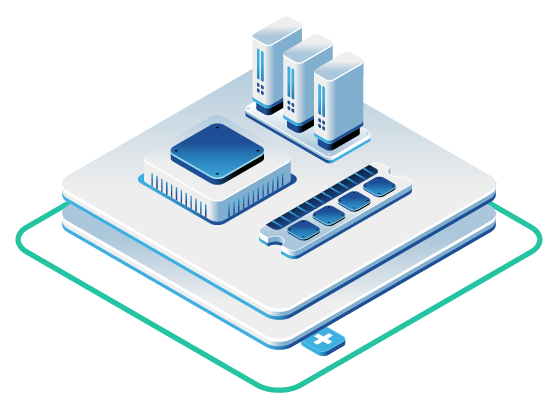Design fault-tolerant validator infrastructure combining dedicated bare metal performance, redundant networking, self-healing Ceph storage, and OpenStack orchestration for maintaining consensus uptime through failures.
Tag: bare metal servers
Cloud infrastructure often represents one of the largest—and least understood—expenses during technical diligence. Learn what to evaluate, which red flags to watch for, and how transparent infrastructure platforms simplify the assessment process for PE firms evaluating SaaS acquisitions.
Blockchain validators demand millisecond precision and unthrottled performance. Public cloud throttling, unpredictable costs, and resource sharing are driving operators to bare metal infrastructure. Learn why dedicated hardware with isolated networking eliminates the risks that shared environments create.
Private equity firms are replacing variable cloud costs with fixed-cost infrastructure to improve EBITDA predictability and portfolio valuations. Learn how transparent, hardware-based pricing creates financial advantages for PE-backed SaaS companies.
Network spikes test validator infrastructure beyond normal limits. Discover how bare metal servers deliver the consistent performance, predictable costs, and operational control needed to maintain validator operations during high-stress network events while maximizing rewards.
PE firms struggle with fragmented infrastructure across portfolio companies. Private cloud standardization delivers 30-50% cost savings, predictable EBITDA, and operational efficiency across all holdings.
SaaS companies preparing for exit can achieve premium valuations through private cloud infrastructure that delivers predictable costs, margin stability, and operational discipline that buyers reward with higher multiples.
Discover how blockchain teams build complete infrastructure stacks using dedicated compute, storage, and networking instead of basic hosting. Learn why validator nodes, RPC endpoints, and data-heavy applications need integrated infrastructure control to achieve predictable performance and scale reliably.
Private equity firms are systematically implementing cloud repatriation strategies across SaaS portfolios to convert unpredictable cloud costs into fixed expenses, typically reducing infrastructure spending by 30-50% while improving EBITDA forecasting accuracy. This strategic shift addresses the margin compression caused by usage-based cloud billing and creates sustainable competitive advantages for portfolio companies.
Discover how GPU acceleration transforms blockchain applications with AI-driven smart contracts. Learn why bare metal infrastructure provides the performance, security, and cost predictability needed for next-generation blockchain workloads that integrate machine learning and decentralized computing.
Discover how bare metal infrastructure eliminates public cloud bottlenecks that impact validator performance. Learn why dedicated hardware, predictable networking, and fixed pricing models directly translate to higher staking rewards and better validator economics in proof-of-stake networks.
Cloud costs eating your EBITDA? CFOs and Operating Partners need strategic alignment to tackle unpredictable public cloud pricing. Discover how fixed pricing models deliver 20-30% savings and financial predictability for PE-backed SaaS companies.
Private cloud infrastructure solves the unique challenges blockchain consortia face with public cloud – eliminating data egress fees, noisy neighbor effects, and compliance complexity while enabling secure multi-party collaboration with predictable costs and performance.
Discover how portfolio managers are transforming blockchain startup growth with predictable infrastructure costs. OpenMetal’s fixed-cost bare metal eliminates unpredictable cloud expenses, delivering 30-60% savings when monthly spend hits $20,000. Learn the infrastructure strategy that’s reshaping blockchain investment returns.
Bare metal confidential computing eliminates virtualization overhead, resource constraints, and unpredictable costs. OpenMetal’s dedicated TDX servers deliver consistent performance for sensitive AI, blockchain, and financial workloads where security can’t be compromised.
Discover why dual smaller NVMe drives outperform single larger drives for enterprise databases on bare metal infrastructure. Learn about workload separation, parallel I/O, and endurance benefits with Micron 7500 MAX SSDs on OpenMetal’s XLv4 and XXLv4 servers for mission-critical applications.
Private equity operating partners are missing a major value creation opportunity by not tracking infrastructure optimization as a KPI. Cloud costs often represent 50% of software companies’ revenue, directly impacting EBITDA and valuations. This guide shows how to make infrastructure efficiency measurable and systematically improve portfolio company margins through predictable, optimized infrastructure strategies.
Discover how OpenMetal’s on-demand private cloud with integrated Ceph storage eliminates AI infrastructure bottlenecks. Real customer case study shows 50% cost reduction and seamless scaling from 0.5PB to 1.9PB capacity. Get enterprise-grade performance with predictable pricing.
Learn how OpenMetal’s dedicated VLAN and VXLAN-ready private cloud architecture provides secure multi-tenant environments with true Layer 2 isolation, unlimited scalability, and unmetered 20 Gbps private networking for compliance-ready deployments.
Learn how OpenMetal’s private networking architecture delivers 20 Gbps per server, free internal traffic, customer-specific VLANs with VXLAN support, and predictable egress billing. Perfect for AI training clusters, database replication, and high-throughput workloads requiring performance without bandwidth constraints.
AI-driven smart contracts require dedicated infrastructure to handle real-time inference, protect sensitive data, and maintain blockchain consistency. Shared cloud environments introduce performance variability and security risks that compromise both AI accuracy and blockchain reliability.
Explore how confidential computing transforms blockchain security by protecting oracle data feeds and smart contract execution. This guide covers implementation strategies, performance optimization, and deployment best practices for building secure decentralized applications on OpenMetal’s bare metal infrastructure.
Discover five blockchain workloads that demand dedicated infrastructure over shared public cloud. From validator nodes to MEV systems, learn why bare metal servers and private cloud provide the performance, security, and control these critical operations require.
Learn how confidential computing infrastructure protects PHI, AI models, and proprietary algorithms during processing. Discover implementation strategies for HIPAA-compliant AI workloads on OpenMetal’s secure bare metal platform, including real-world healthcare use cases and deployment guides.
Regulated financial institutions need blockchain infrastructure that balances innovation with compliance. Discover why bare metal servers deliver the control, performance, and security that enterprise blockchain demands—from validator nodes to tokenization platforms. No compromise required.
MPC lets multiple parties compute together without sharing private data — but infrastructure matters. Learn how confidential computing on OpenMetal bare metal servers with Intel TDX helps secure MPC deployments for blockchain, fintech, and privacy-first apps.
Modular blockchain networks like Celestia, Cosmos, and Polygon CDK are redefining infrastructure needs. This post outlines why bare metal servers and private clouds offer the control, performance, and predictability that modular blockchains require.
Confidential computing is the missing piece for full-stack security. Learn how OpenMetal helps technical teams build end-to-end trust with hardware isolation and open source infrastructure.
Validator uptime matters. Learn how to host blockchain validator nodes with OpenMetal’s bare metal and hosted private cloud for performance, security, and full infrastructure control.
VPNs protect data in transit—but what about when it’s being processed? Discover how confidential computing closes the gap and how OpenMetal makes it deployable.
This guide makes confidential computing practical. Explore how to reduce deployment complexity using OpenMetal’s secure, TDX-enabled infrastructure.
This guide makes confidential computing practical. Explore how to reduce deployment complexity using OpenMetal’s secure, TDX-enabled infrastructure.
Learn how to improve confidential computing performance using Intel TDX, bare metal, and GPU passthrough without sacrificing security.
Learn how to deploy confidential computing workloads on bare metal using Intel TDX, OpenMetal servers, and secure infrastructure best practices.
Learn how to enable Intel SGX and TDX on OpenMetal’s Medium, Large, XL, and XXL v4 servers. This guide covers required memory configurations (8 DIMMs per CPU and 1TB RAM), hardware prerequisites, and a detailed cost comparison for provisioning SGX/TDX-ready infrastructure.
Discover how OpenMetal delivers performance and flexibility through tiered cloud storage options. Learn the pros and use cases of direct-attached NVMe, Ceph-based high availability block storage, and scalable, low-cost erasure-coded object storage—all integrated into OpenStack.
A crypto trading firm deployed blockchain infrastructure on bare metal to run Solana validator workloads with low latency and full control.
A Web3 team deployed blockchain infrastructure on bare metal and Ceph storage to scale decentralized workloads and cut storage costs.
As blockchain technology moves beyond cryptocurrency, more companies are running blockchain workloads on bare metal to meet growing demands for speed, security, and control. This post explores how it works, why it matters, and where it’s already being used in real-world industries.


































